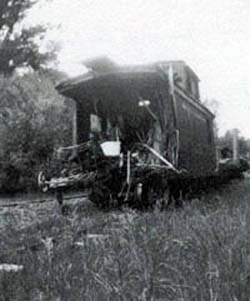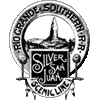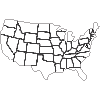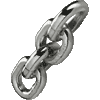
Dolores Colorado USA - One of the joys of working at the Ridgway Railroad Museum is the stream of visitors who come by with fascinating stories about their relatives who worked on either the Denver & Rio Grande Western (D&RGW) or the Rio Grande Southern (RGS) narrow gauge lines.
These were exciting but dangerous jobs.
Fay Brewer, a friend of museum docent and former board member Connie Schaeffer, recently provided information about a relative, RGS fireman Norton E. Brewer.
Norton Brewer came from a railroading family.
His grandfather, David B. Sawyer, began working for the Denver & Rio Grande (D&RG) in 1888 as a section foreman out of Salida.
After also working on the D&RG Lake City Branch, he quit the railroad and moved his family to Silverton where he worked at the Silver Lake Mill.
By 1926 David Sawyer had returned to railroading, where he worked as a section foreman out of Durango.
His son Rudolph, Norton Brewer's uncle, also worked for the D&RG.
Norton Brewer was employed by the RGS from 1946-1949.
According to Fay, part of his time was spent at Rico keeping the engines warm during the winter.
On 26 Jul 1948, Norton was involved in an accident on the track near Dolores.
A flatcar loaded with a big boom, bridge stringers, and other material was on a siding near the engine house at Rico.
Two impish 12-year-olds managed to release the brakes, throw several switches, and get it traveling south on the main line.
A section foreman tried to chase down the flatcar on a track inspection vehicle known as a pop-car because of the noise its gasoline engine made.
However, he had no luck stopping it by throwing switches to divert it onto a siding.
Traveling at about 11-1/2 miles per hour, it neared Priest's Gulch where a crew of six men were working on bridge 78-B, causing the men to leap into the creekbed to save themselves.
The bridge foreman gave chase in his pop-car, but he was unable to get close enough to stop the flatcar.
Norton Brewer was on a work train that had unloaded some rip-rap to stabilize the right-of-way.
It had just left Stoner and was backing north toward the speeding flatcar.
Caboose 0403 was in the front followed by several flatcars with Engine 41 pushing.
They had been traveling about 12 miles per hour and had slowed to around 4 mph to let roadmaster Murphy off to examine a bad section of track.
Conductor McLean was leaning out the cupola window watching Murphy, and Brewer was watching Murphy to relay signals to engineer Laube.
A third crew member, Tucking, was on the other side of the cupola, and spotted the oncoming flatcar, now moving at close to 25 mph, just as it careened around a bend and plowed into the work train.
The train's airline snapped, causing the brakes to halt the train.
The crew yelled at each other trying to figure out who had applied the emergency brakes.
The crash was strong enough to send some of the stringers on the flatcar inside the caboose.
If the train had been moving at its usual speed of 12 mph, and had any of the crew been riding on the end platform of the caboose as is usually the case, there would have been fatalities.
Only Brewer was injured when the force of the collision pushed his head into an engine cab window.
His railroading career came to an end a year later with another injury.
Brewer broke his wrist in 1949 when the engine he was riding in went off a bridge on Chicken Creek near Mancos.
By the time his wrist was healed, the RGS was in decline and he was not rehired.
Author unknown.
provisions in Section 29 of the Canadian
Copyright Modernization Act.










